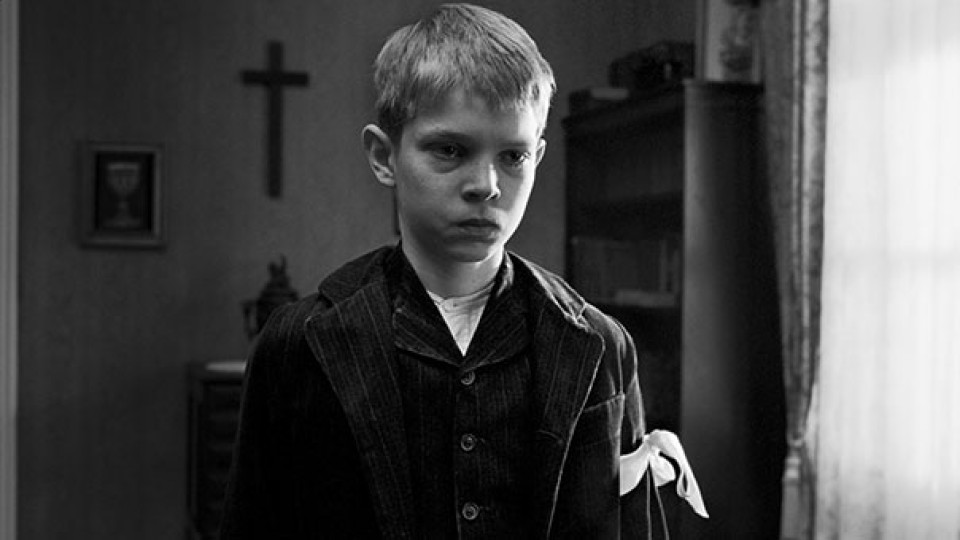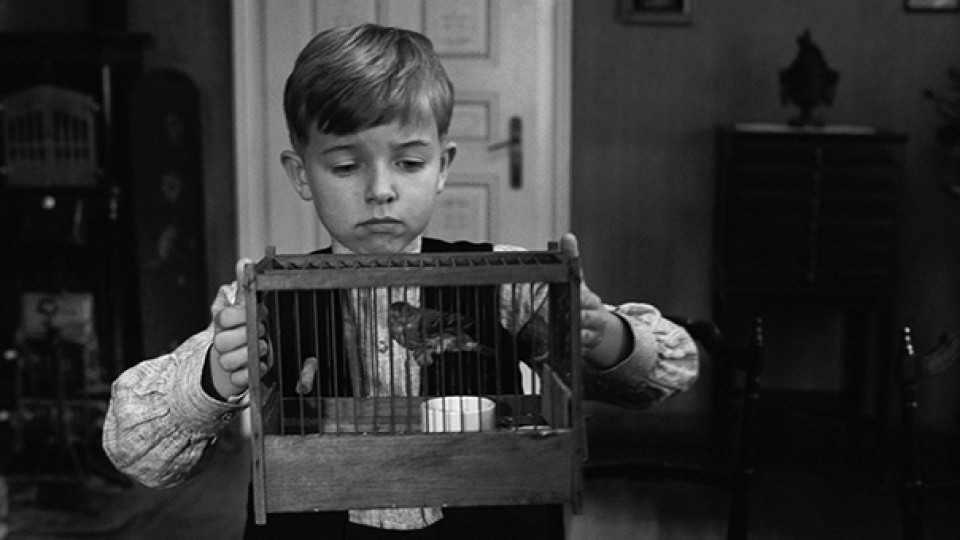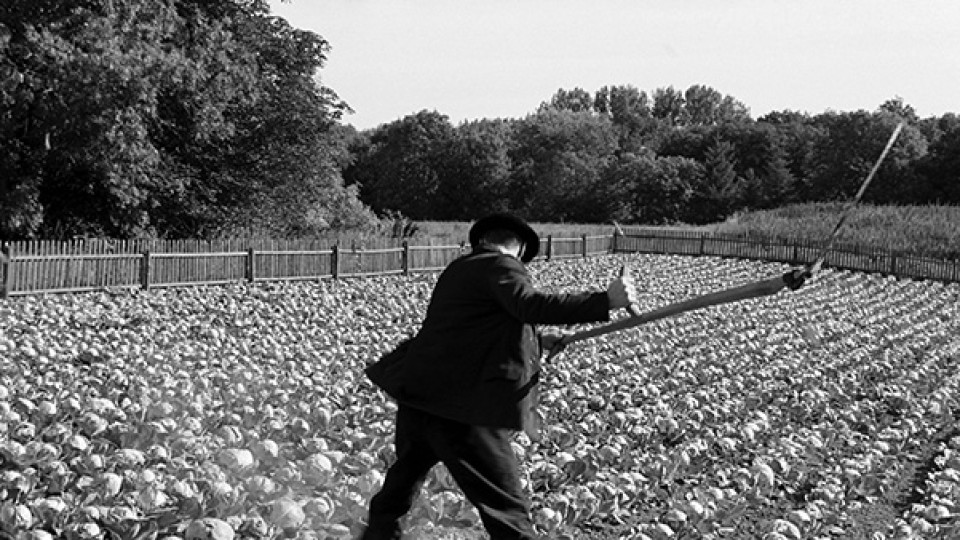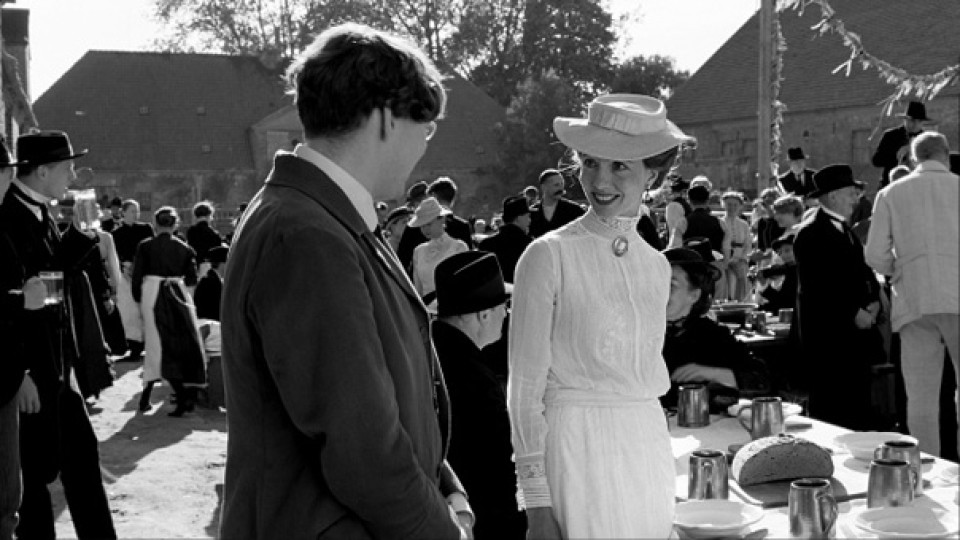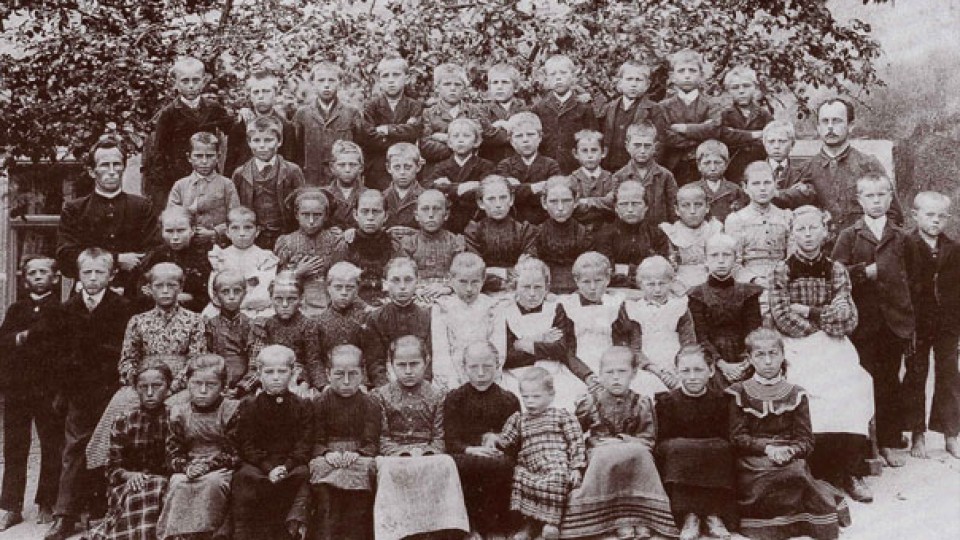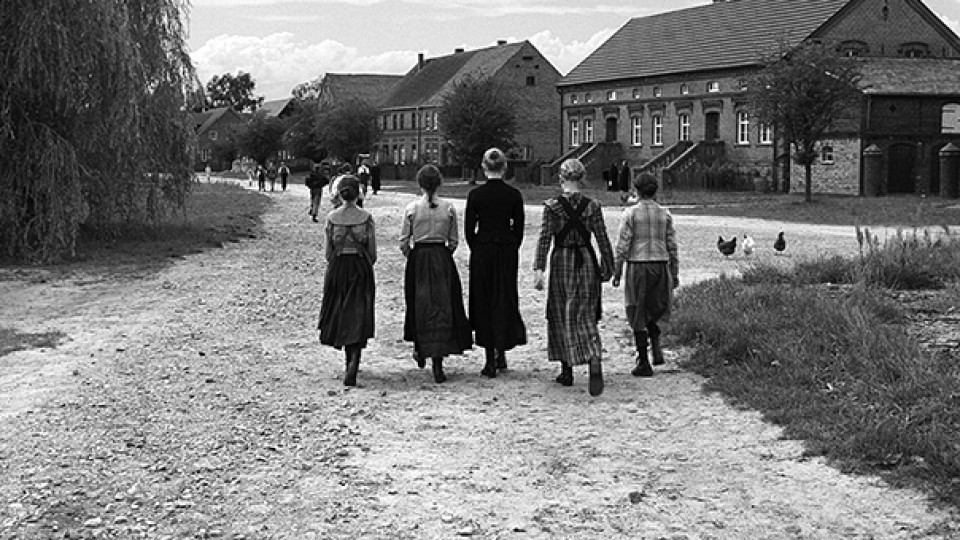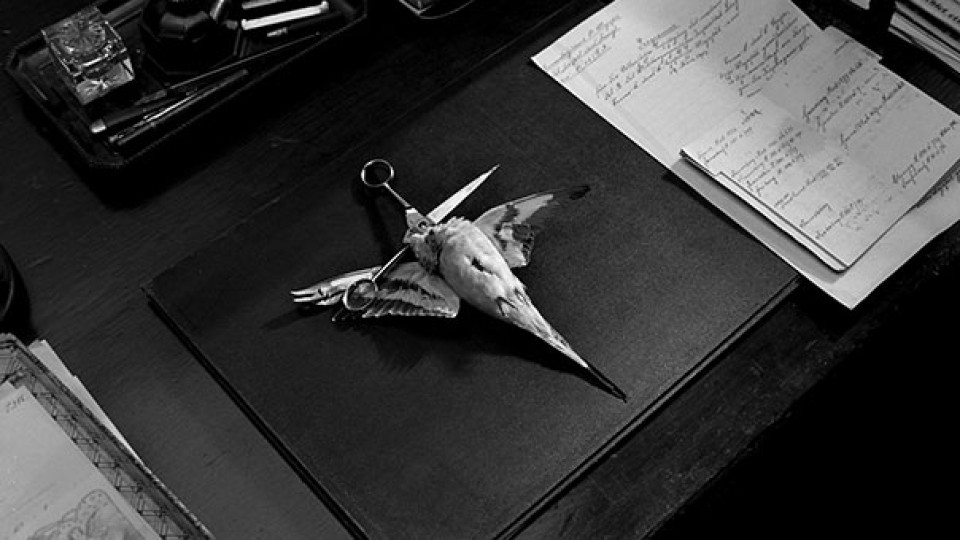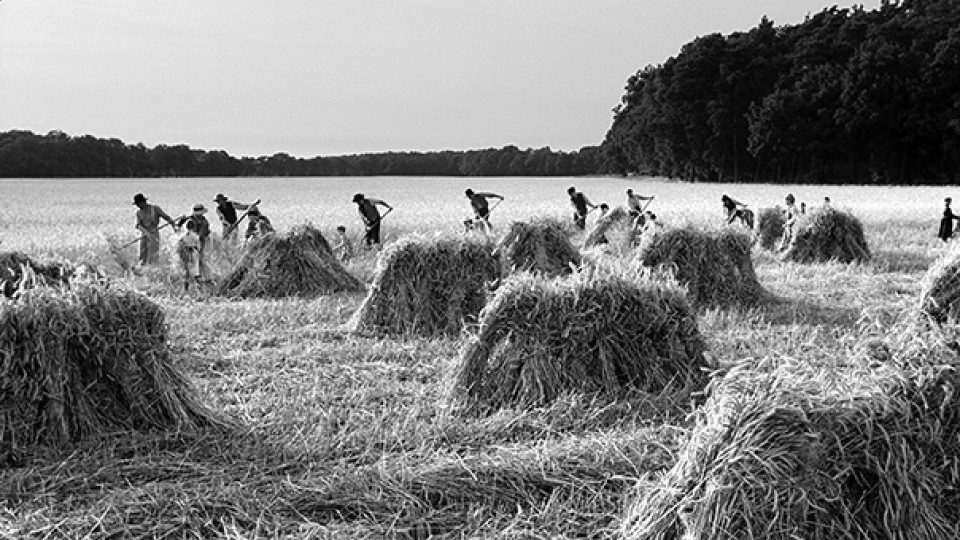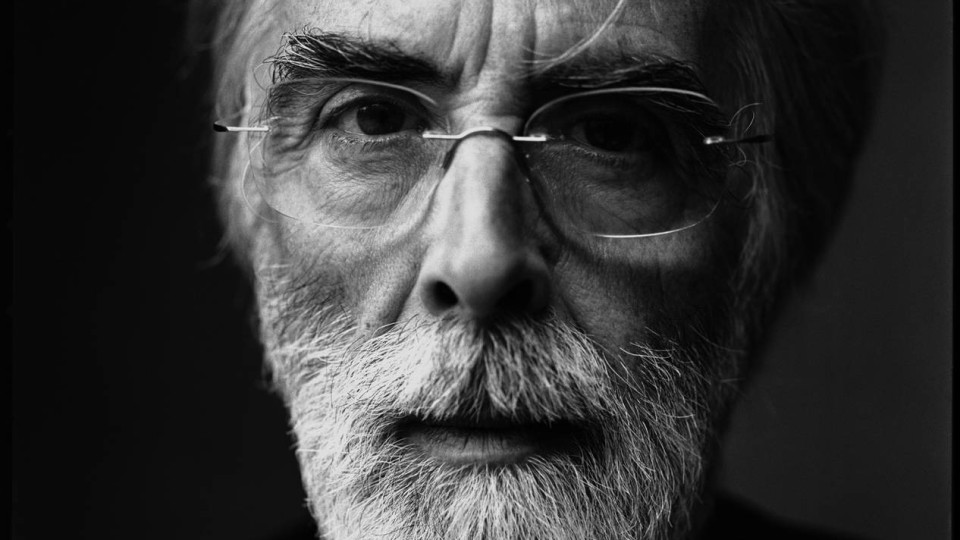«The film examines the issue of the conditions that lead to terrorism. To do this it employs Germany’s past, which, I
would like to emphasize, is only an example. It’s important to me that the film isn’t interpreted as being solely
about German Fascism, but that it more generally deals with the roots of all kinds of terrorism – whether politically
right, politically left or religious.»
Children have always played a role in your work, and in this case they occupy the foreground. Why?
Michael Haneke: The underlying idea was to make a film about a group of children who turn the ideals that have been preached
to them into absolute principles, then punish the individuals who did the preaching, who themselves don’t live in accordance
with these ideals. As soon as an ideal or a principle is turned into an ideology, it becomes dangerous. Children tend to take
what they’re told seriously, and that can become dangerous. The film examines the issue of the conditions that lead to
terrorism. To do this it employs Germany’s past, which, I would like to emphasize, is only an example. It’s important
to me that the film isn’t interpreted as being solely about German Fascism, but that it more generally deals with the
roots of all kinds of terrorism⎯whether politically right, politically left or religious.
Guilt is an essential theme in your work, and The White Ribbon – the title evokes a symbol of freedom from guilt – deals most specifically with an interplay between guilt and
innocence.
Michael Haneke: I don’t believe that children are innocent. Children aren’t innocent, they’re naive and take
things as they’re told. When you take something literally, it can be dangerous. The world isn’t divided into good
and evil, as politicians and bad authors like to tell us. That’s what genre film lives from, assuring us that nothing
bad can happen to us in the end. Things are different in reality and I do my best to examine the contradictory reality. Children
are neither pure innocents nor pure monsters; they’re somewhere in between, like the rest of us.
One theme you can’t deal with in this case because of the historical setting is criticism of the media, and film in particular.
Michael Haneke: I always like to feed the viewer’s distrust of what they’re shown in film. That’s expressed
in The White Ribbon solely when the narrator says, “I don’t know if all the details of the story I’m going
to tell you are true, a lot of it’s hearsay, etc.” The film’s story is told in a contradictory way – it’s
not that we see only what the narrator was actually able to see. There are also scenes where he wasn’t there. That’s
my wink at the beginning, to make it clear that we’re not dealing with a factual account, but someone’s construct
made in an attempt to reconstruct the truth. The film never claims that “This is how it was.”
This is your first film that’s set not in the present, but in a historical context.
Michael Haneke: This period appeared to be especially relevant to the theme I mentioned. I’m especially interested in
Protestantism because I was brought up as a Protestant, which is relatively uncommon in Austria. My father was a German Protestant,
my mother was an Austrian Catholic. Protestantism influenced me significantly in my childhood. The other aspect was that there’s
practically a glut of films about Nazi Germany and German Fascism, but not a single one of them deals with its roots, or the
backstory. What came before it. I think the question of how it happened is interesting. Of course, the film isn’t an
exhaustive analysis of how Fascism is born, and it isn’t intended to be, but it looks at the roots.
The voice-over gives the film a second narrative level which is at times synchronous with the events on screen and at times
many years after they take place. Why did you decide to use this double narrative level?
Michael Haneke: Because it permits a form of distance that’s positive for the theme. In the same way that the film being
in black and white creates distance. Color would give it a false naturalism. The novelistic style Fontane employed often had
the same effect. As a result the story moves away somewhat and can be looked at more “objectively.” The narrative
voice is that of an old man who, from his point of view in the past, is able to reflect upon the events. On the basis of the
speaker’s age, he could have experienced Fascism and the Baader-Meinhof Gang too. Both Ulrike Meinhof and Gudrun Ensslin
were from very Protestant homes. With that I’m not at all saying that Protestantism tends toward political extremism,
but Protestantism is more rigorous in its thought and morality than Catholicism, which isn’t necessarily bad, but when
it’s made absolute and turned upside down, it’s dangerous.
You contrasted the somber atmosphere in the village and the coldness of the familial relationships with a kind of nature that
represents harmony and abundance.
Michael Haneke: That’s the sad thing or the beautiful thing, however you want to see it. Nature is always beautiful as
long as we don’t destroy it, and of course making use of this contrast is dramatically efficient. It’s not necessary
for everything to be sad and ugly in order to show all the abysses inside us. I think making use of the contrast is more interesting
dramatically.
You shot the dark inner and family lives with very little light. How did you work with your cameraman, Christian Berger, on
the visual concept?
Michael Haneke: At times we used nothing more than a few kerosene lamps or candles for shooting. The available black-and-white
stock wouldn’t have been nearly photosensitive enough for that. For that reason we shot with color film and then printed
on black and white. Black and white was an option for this theme, and I made it a basic requirement for this film, and then
had to spend a lot of time convincing the producers. Aside from the aesthetic concept, black and white involved a second major
advantage in terms of the scenery, a lot of which was constructed, though it looks real. What Christoph Kanter built and adapted
to match what was already there wouldn’t have been possible in color. Black and white also helped a great deal in suppressing
nuances that often betray the fact that the decorations are artificial. A lot of what looks so perfect now wouldn’t have
been possible ten or fifteen years ago without digital correction. We spent an eternity polishing during postproduction, and
there are more than 60 digital tricks in the film. At the country estate, for example, the roofs of the outbuildings were
really made of corrugated Eternit, and that had to be replaced with tiles frame by frame. Building those roofs would have
cost a fortune. There’s really a lot of work on details in this film.
There are a few especially moving scenes with the children. Is writing dialogue for children particularly challenging for
you?
Michael Haneke: No, I don’t think that it’s more difficult than anything else. I find it more rewarding. Children
are always disarming because there’s something direct about them. The scene with the little boy that involves death,
that’s just a beautiful scene. With this project I was really afraid that we’d invest a great deal of time and money
in the preparations, though I was sure that all the technical aspects would be ready, and just before shooting started I’d
be stuck without the right actors for the child roles. That’s why we started looking at an extremely early date, so I
wouldn’t have to take just anybody because time was running out. The project was too expensive and demanding for that.
And then we did find the right children, especially the little ones, for these parts. It was a matter of luck, and we left
a little bit up to chance, as we auditioned almost 7000 children. Kids are like playing the lottery, it’s either all
or nothing. When you have an untalented child, nothing turns out right. If he or she’s talented, you get a pure form
of perfection that’s possible with adults only very rarely. All my stories are set in a family context, so I can never
avoid working with children, although I get nervous about finding the right one every time.
The White Ribbon has received the most important award given by an international festival. How does that make you feel?
Michael Haneke: What should I say? Of course, I was extremely pleased. Except for the Golden Palm I had already received all
the awards that you can win at Cannes. On top of that, being invited to compete there isn’t bad, considering the fact
that the 20 films shown are chosen from a selection of approximately 1500. Being selected is good in itself, and winning an
award is even better. But once you’ve won an award, you want more, of course. It was nerve-racking, because when Isabelle
Huppert announced the Grand Prix du Jury for Un prophète, I knew that there was only one award left. It was pretty stressful,
but extremely nice at the same time.
And I assume it’ll make work easier in the future.
Michael Haneke: I can’t complain, because for the most part I’ve always been able to do the things I want. The White
Ribbon’s screenplay has been around for a relatively long time. It’s true that you must be able to have a success
which then justifies a project that’s more expensive or risky. For that reason I assume that doing the next project will
be easier, because your level of prominence rises with a success like the Golden Palm. The nice thing about it is that it
involves a great deal of recognition, but the thing to do now is to see what I can put together next. The thing that isn’t
as wonderful is that the distributors want to send me to premieres all over the world now. I consider that a waste of time,
even though in a way it’s part of the whole process.
Because you’re already working on new material?
Michael Haneke: I’d have to shut myself up for that and write something, but my desk is already full of notes for a new
project.
Interview: Karin Schiefer
Juni 2009

